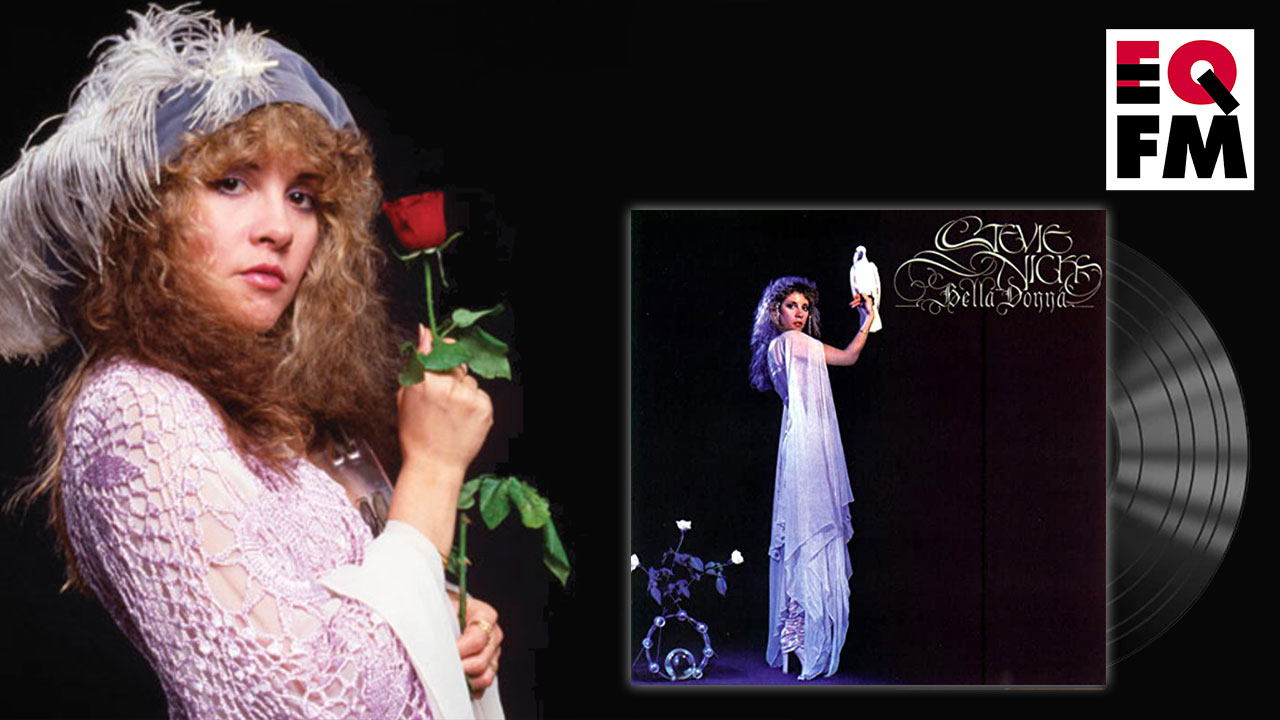Stevie Nicks: Bella Donna

Stevie Nicks (by Herbert W. Worthington III via stevienicksofficial.com)
Album ReCue, a part of FUV's EQFM initiative, takes an on-air and online look back at influential releases by women that altered our perspective not only of the artist, but her invaluable impact on music history. Above, listen to a conversation with Alisa Ali and Eric Gottlieb about Stevie Nicks' 1981 solo debut, Bella Donna, and below, Kara Manning's overview.
Mystical country, wreathed in chiffon and self-empowerment, with a sanguine eye to romance, Stevie Nicks’ soulful solo debut, 1981’s Bella Donna, was the young songwriter’s liberating step into her own light.
In her early thirties at the time of its release, Nicks had spent the bulk of her career linked to her one-time boyfriend, now (very) ex, Lindsey Buckingham, and the band that had vaulted them to superstardom, Fleetwood Mac. Her throaty incantations circling powerful women, like “Rhiannon" and the wistful narrator of “Landslide,” were cornerstones to the band’s mid-Seventies transformation to arena colossus, but Nicks also watched with frustration as some of her best songs, like “Silver Springs,” were shuttled to B-sides.
Torn between her rock ‘n’ roll persona and her life away from the exhausting studio-to-stage loop, Nicks finally had the album-length freedom to tell her own story on Bella Donna, kicking around all angles of herself: the strong woman stymied by love, a lonely weaver of spells, feral gamine, and no-nonsense cowgirl of the Arizona desert.
At the time of Bella Donna’s birth, Nicks had spent an exhausting year touring behind Tusk, questioning who she might be away from the gargantuan machinery of the Mac, the stormy drama of the band’s internal dynamics (cough, Buckingham), and the decadence that was the province of a rock ‘n’ roll life. She later told Rolling Stone’s Timothy White that the album was far more than a solo outlet for songs, but a cathartic message to herself.
“‘Bella Donna’ is a term of endearment I use,” she said, “and the title is about making a lot of decisions in my life, making a change based on the turmoil in my soul. You get to a certain age where you want to slow down, be quieter. The title song was basically a warning to myself and a question to others.”
Encouraged by producer Jimmy Iovine, who had collaborated with one of her absolute favorite bands, Tom Petty and the Heartbreakers, Nicks wrote seven of Bella Donna’s ten songs and co-wrote two with the E Street Band’s Roy Bittan (“Think About It”) and the Heartbreakers’ Benmont Tench (“Kind of Woman”). Only one song wasn’t officially hers, but you wouldn’t know it: Petty and Mike Campbell’s “Stop Draggin’ My Heart Around,” one of the most sublime rock duets ever recorded. (In the early days of MTV, watching the exhilarating video of Petty-and-Nicks' pas de deux of power gazing was a constant.) But initial sessions for the album were also a sisterly triad, as Nicks worked out arrangements with backing vocalists and friends Sharon Celani and Lori Perry, accompanied by Tench.
Another duet with the Eagles’ Don Henley, the husky lovers’ lullaby “Leather and Lace,” with its twinkling, music-box melody, was also a Top 10 Billboard chart hit (Nicks originally wrote it for Waylon Jennings and Jessi Colter). But it was “Edge of Seventeen,” a full-throttle storm of anguish over the December 1980 deaths of both her uncle and John Lennon, that ticked bold boxes for Nicks: It’s a relentless locomotive of a track that entwines both her whirling enchantress alter ego and her very real, palpable grief. Nearly 40 years after its release, it's still a raw thrill to leap astride the song's galloping pace, especially the unnerving spur of Nicks’s guttural ululation from 3:11-16.
There are deeper diamonds too, some influenced by her eccentric country musician grandfather, A.J. Nicks Sr., to whom the album is dedicated: the melancholy, pedal steel beauty of the title track, the honky tonk sigh of “After the Glitter Fades,” and the restless twists, turns and countermelody of “How Still My Love.” It’s an album meant to live on repeat after heartbreaks — not to mourn lost love, but to probe a deeper understanding of an equitable relationship (“Outside the Rain,” most poignantly). Nicks has always dissected her sorrow and pain, but it’s her unwavering perseverance, scramble to recovery, and empathetic lyricism that has made her songs the balm for millions of wrecked hearts.
Nicks is the only woman in the Rock and Roll Hall of Fame who has been inducted twice — it’s not an institution known for gender equality. That said, her induction for her solo work in 2018, away from Fleetwood Mac, was a long overdue acknowledgement of her enormous impact. She's befriended many of the musicians who cite her as a major influence too and her ardent admirers include Taylor Swift, Sheryl Crow, Beyoncé, Miley Cyrus, Haim, Lana Del Rey, Vanessa Carlton, Harry Styles, and Bon Iver's Justin Vernon.
"Everybody isn’t going to have it as easy as I did," Nicks reflected in a 2019 interview with Rolling Stone. "I didn’t face a lot of the things that a lot of women have faced. I was very lucky. Christine [McVie] and I made a pact the day I joined Fleetwood Mac. She and I said, 'We will never be treated like second-class citizens. We will never be not allowed to hang out in a room full of intelligent, crazy rock and roll stars, because we’re just as crazy and just as intelligent as they are.' We just made that promise to each other that we would do everything we could do for women, that we would fight for everything that we wanted and get it. That our songs and our music would be equally as good as all the men surrounding us. And it was."
Listen
WFUV's EQFM Album ReCue: Stevie Nicks's Bella Donna

